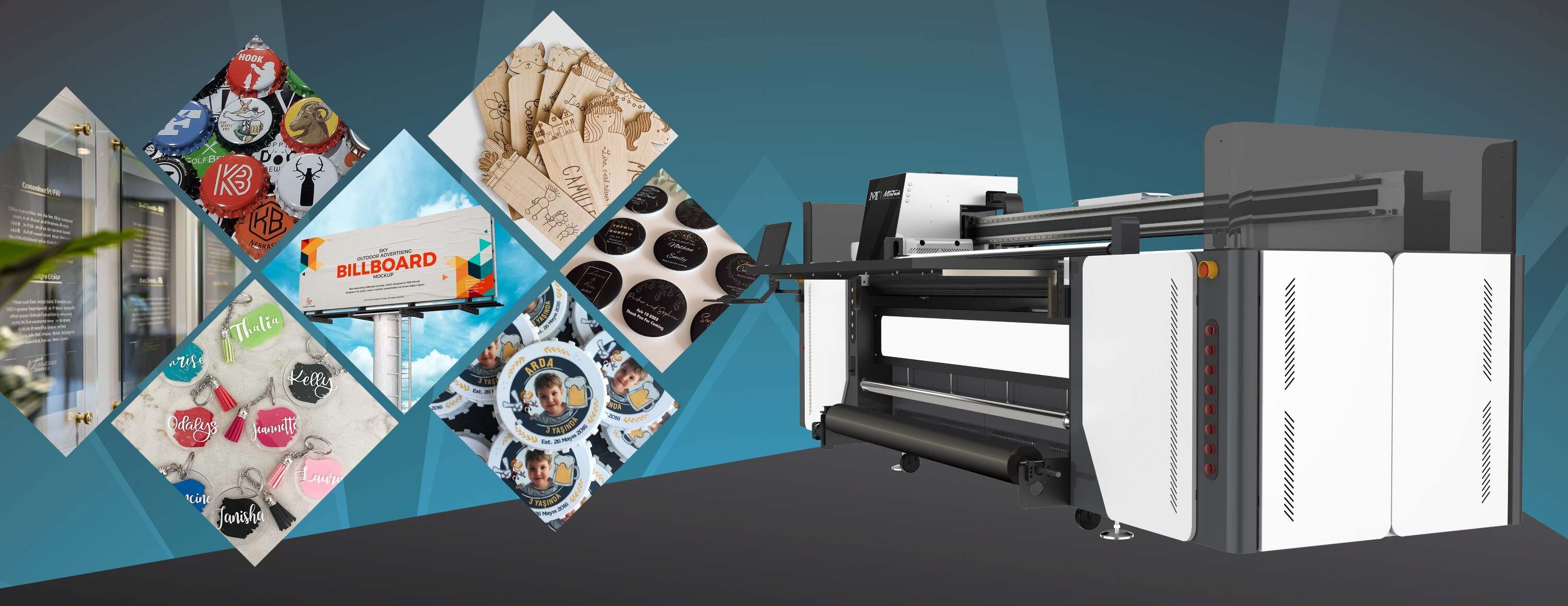Dual-Lamp UV Printers vs. Single-Lamp: Pros and Cons Explained
Introduction
When it comes to UV printers, one of the most important but often overlooked features is the curing system — particularly whether the machine uses a single-lamp or dual-lamp configuration. These UV lamps are responsible for curing the ink instantly, and their number can make a significant difference in print speed, ink adhesion, and overall output quality. So, which one should you choose? Let’s break down the pros and cons of both to help you make an informed decision.
Understanding UV Lamp Configurations
UV printers rely on UV lamps to cure the ink as it’s deposited on the substrate. These lamps can either be positioned on one side (single-lamp system) or on both sides of the print head (dual-lamp system). The difference affects how quickly and evenly the ink cures, especially during high-speed or double-sided printing.
Advantages of Dual-Lamp UV Printers
- **Faster Curing Speed:** Lamps on both sides cure the ink more quickly, making it ideal for high-volume jobs.
- **Even Ink Drying:** Reduces the risk of smudging or uneven texture, especially on wider media.
- **Enhanced Layering:** Better for 3D texture and varnish effects requiring multiple passes.
Drawbacks of Dual-Lamp UV Printers
- **Higher Cost:** Dual-lamp machines are usually more expensive to purchase and maintain.
- **Increased Energy Consumption:** Running two lamps uses more electricity, which could add to operational costs.
- **More Heat Output:** Some sensitive materials may warp or deform under additional heat.
Advantages of Single-Lamp UV Printers
- **Cost-Efficient:** More affordable both in upfront cost and long-term maintenance.
- **Energy Saving:** Uses less power, making it suitable for smaller businesses or eco-conscious operations.
- **Compact Design:** Often found in smaller desktop UV printers for limited-space environments.
Limitations of Single-Lamp Systems
- **Slower Curing Time:** May result in longer production cycles.
- **Less Effective on Dark Surfaces:** Incomplete curing can lead to dull or sticky prints.
- **Not Ideal for Special Effects:** Struggles with complex layering or raised ink effects.
Which One is Best for You?
Choosing between a single-lamp and dual-lamp UV printer depends on your business goals:
- Opt for a dual-lamp printer if speed, precision, and special effects are top priorities.
- A single-lamp printer works well for low-to-medium volume needs with a focus on affordability.
Conclusion
Understanding the differences between single-lamp and dual-lamp UV printers allows you to make a smart, ROI-driven decision. Both systems have their place in the printing ecosystem, and selecting the right one will enhance your workflow efficiency and print quality.
Explore our high-performance dual-lamp compatible UV printer for faster, more efficient UV printing across a wide range of materials.

